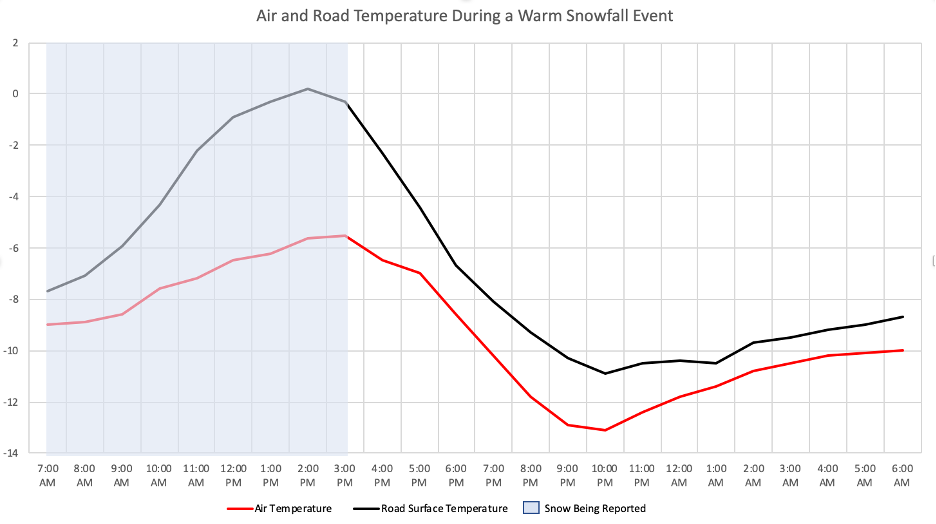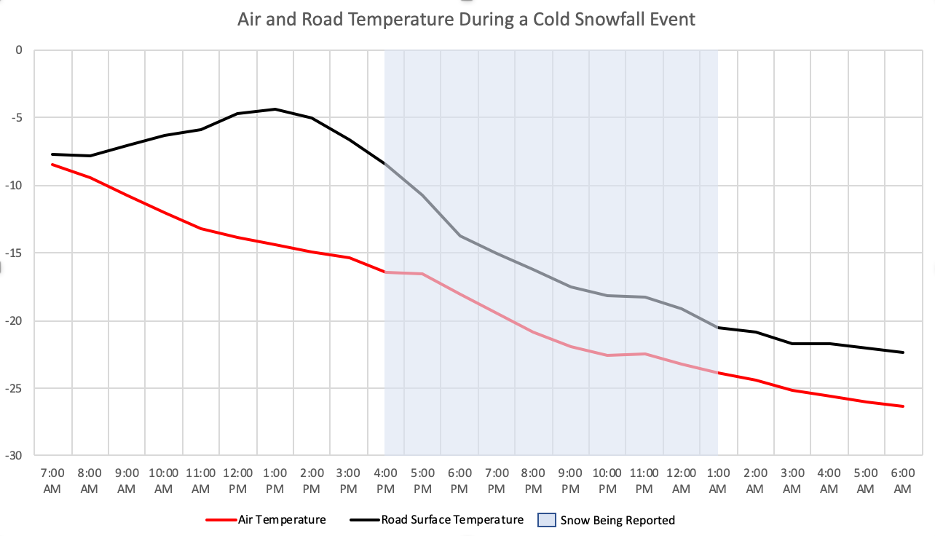Have you ever wondered why city and municipal crews apply different solutions on roadways based on the temperature and time of year? Weather plays a significant role in determining how effective a solution or abrasive can behave during the winter months, and whether crews should apply beet juice, a salt brine, salt, or sand.
The choice of road chemicals is largely dependent on temperature. Salt is one of the most common substances used, but it is most effective when road temperatures are above -10 C. An example case where salt would be useful is depicted in Figure 1. The graph shows snow occurring with the temperature rising from -8 C to 0 C and then back down no lower than -10 C. In this case salt would effectively melt any new snow or ice accumulations.

Salt becomes less effective when road temperatures drop below -10 C, thus, sand becomes more useful as an abrasive on roads. In Figure 2 you can see snow occurring at temperatures below -10 C, with the trend showing temperature dropping even more after the event ends. Rather than wasting salt when it will be ineffective, maintenance operators would apply only sand unless temperatures are expected to warm significantly.

In some cases, a salt brine solution may be applied to remove accumulated snow or ice, or prevent it from forming to begin with. This liquid-type solution is often used for this purpose on structures like bridges. In recent years, more environmentally friendly alternatives like beet juice have also been used for this purpose. Beet-juice based solutions also have the advantage of working at colder temperatures compared to salt.
When significant snowfalls are expected (>5 cm) plows may be dispatched. However, the temperature trend again becomes important. In the wake of a moderate 5 cm snowfall event, if road temperatures are expected to rise above freezing, fewer plows may be required due to natural melting. Knowing these trends can help to save significant costs on maintenance operations.
Weatherlogics provides municipalities road weather forecasts as a cost-saving solution. Our proprietary road weather model forecasts aid in decision making, helping to ensure resources are not wasted when they will be ineffective.
Just click the button below if you’d like to learn more about this topic.




